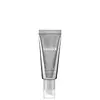What's inside
What's inside
 Key Ingredients
Key Ingredients

 Benefits
Benefits

 Concerns
Concerns

 Ingredients Side-by-side
Ingredients Side-by-side

Water
Skin ConditioningGlycerin
HumectantCoco-Caprylate/Caprate
EmollientC10-18 Triglycerides
EmollientCoco-Caprylate
EmollientPropanediol
SolventOryza Sativa Starch
AbsorbentCetyl Alcohol
EmollientGlyceryl Stearate
EmollientBakuchiol
AntimicrobialRetinal
Skin ConditioningHyaluronic Acid
HumectantPalmitoyl Tripeptide-1
Skin ConditioningPalmitoyl Tetrapeptide-7
Skin ConditioningPalmitoyl Tripeptide-38
Skin ConditioningTocopherol
AntioxidantEthylhexylglycerin
Skin ConditioningMannitol
HumectantCholesterol
EmollientPhosphatidylcholine
EmulsifyingHydrogenated Phosphatidylcholine
EmulsifyingXanthan Gum
EmulsifyingAcrylates/C10-30 Alkyl Acrylate Crosspolymer
Emulsion StabilisingHydroxypropyl Starch Phosphate
Carbomer
Emulsion StabilisingHydroxypropyl Cyclodextrin
MaskingPEG-75 Stearate
Ceteth-20
CleansingSteareth-20
CleansingDecyl Glucoside
CleansingCaprylyl Glycol
EmollientSodium Lactate
BufferingButylene Glycol
HumectantCitric Acid
BufferingSodium Chloride
MaskingPolysorbate 20
EmulsifyingPhenoxyethanol
PreservativeSodium Benzoate
MaskingPotassium Sorbate
PreservativeWater, Glycerin, Coco-Caprylate/Caprate, C10-18 Triglycerides, Coco-Caprylate, Propanediol, Oryza Sativa Starch, Cetyl Alcohol, Glyceryl Stearate, Bakuchiol, Retinal, Hyaluronic Acid, Palmitoyl Tripeptide-1, Palmitoyl Tetrapeptide-7, Palmitoyl Tripeptide-38, Tocopherol, Ethylhexylglycerin, Mannitol, Cholesterol, Phosphatidylcholine, Hydrogenated Phosphatidylcholine, Xanthan Gum, Acrylates/C10-30 Alkyl Acrylate Crosspolymer, Hydroxypropyl Starch Phosphate, Carbomer, Hydroxypropyl Cyclodextrin, PEG-75 Stearate, Ceteth-20, Steareth-20, Decyl Glucoside, Caprylyl Glycol, Sodium Lactate, Butylene Glycol, Citric Acid, Sodium Chloride, Polysorbate 20, Phenoxyethanol, Sodium Benzoate, Potassium Sorbate
Retinal 0.2%
Skin ConditioningHyaluronic Acid
HumectantCaprylic/Capric Triglyceride
MaskingGlycerin
HumectantIsododecane
EmollientCyclodextrin
AbsorbentCetearyl Alcohol
EmollientCetearyl Olivate
Sodium Acrylate/Sodium Acryloyldimethyl Taurate Copolymer
Emulsion StabilisingSorbitan Olivate
EmulsifyingTocopheryl Acetate
AntioxidantSqualane
EmollientSodium Hyaluronate
Humectant3-O-Ethyl Ascorbic Acid
Skin ConditioningDaucus Carota Sativa Seed Oil
EmollientHydroxyethyl Acrylate/Sodium Acryloyldimethyl Taurate Copolymer
Emulsion StabilisingEthylhexylglycerin
Skin ConditioningPentylene Glycol
Skin ConditioningVanilla Planifolia Fruit Extract
Skin ConditioningHydroxypropyl Methylcellulose
Emulsion StabilisingRubus Chamaemorus Seed Oil
Skin ConditioningSodium Polyaspartate
HumectantTetrahexyldecyl Ascorbate
AntioxidantDipteryx Odorata Bean Extract
MaskingBHT
AntioxidantPolyhydroxystearic Acid
EmulsifyingDisodium EDTA
Hydroxyacetophenone
AntioxidantTitanium Dioxide
Cosmetic ColorantPhenoxyethanol
PreservativeAlumina
AbrasiveLonicera Caprifolium Flower Extract
PerfumingIsostearic Acid
CleansingLecithin
EmollientLonicera Japonica Flower Extract
Skin ConditioningPolyglyceryl-3 Polyricinoleate
EmulsifyingStearic Acid
CleansingCoumarin
PerfumingCI 14700
Cosmetic ColorantRetinal 0.2%, Hyaluronic Acid, Caprylic/Capric Triglyceride, Glycerin, Isododecane, Cyclodextrin, Cetearyl Alcohol, Cetearyl Olivate, Sodium Acrylate/Sodium Acryloyldimethyl Taurate Copolymer, Sorbitan Olivate, Tocopheryl Acetate, Squalane, Sodium Hyaluronate, 3-O-Ethyl Ascorbic Acid, Daucus Carota Sativa Seed Oil, Hydroxyethyl Acrylate/Sodium Acryloyldimethyl Taurate Copolymer, Ethylhexylglycerin, Pentylene Glycol, Vanilla Planifolia Fruit Extract, Hydroxypropyl Methylcellulose, Rubus Chamaemorus Seed Oil, Sodium Polyaspartate, Tetrahexyldecyl Ascorbate, Dipteryx Odorata Bean Extract, BHT, Polyhydroxystearic Acid, Disodium EDTA, Hydroxyacetophenone, Titanium Dioxide, Phenoxyethanol, Alumina, Lonicera Caprifolium Flower Extract, Isostearic Acid, Lecithin, Lonicera Japonica Flower Extract, Polyglyceryl-3 Polyricinoleate, Stearic Acid, Coumarin, CI 14700
Ingredients Explained
These ingredients are found in both products.
Ingredients higher up in an ingredient list are typically present in a larger amount.
Ethylhexylglycerin (we can't pronounce this either) is commonly used as a preservative and skin softener. It is derived from glyceryl.
You might see Ethylhexylglycerin often paired with other preservatives such as phenoxyethanol. Ethylhexylglycerin has been found to increase the effectiveness of these other preservatives.
Glycerin is already naturally found in your skin. It helps moisturize and protect your skin.
A study from 2016 found glycerin to be more effective as a humectant than AHAs and hyaluronic acid.
As a humectant, it helps the skin stay hydrated by pulling moisture to your skin. The low molecular weight of glycerin allows it to pull moisture into the deeper layers of your skin.
Hydrated skin improves your skin barrier; Your skin barrier helps protect against irritants and bacteria.
Glycerin has also been found to have antimicrobial and antiviral properties. Due to these properties, glycerin is often used in wound and burn treatments.
In cosmetics, glycerin is usually derived from plants such as soybean or palm. However, it can also be sourced from animals, such as tallow or animal fat.
This ingredient is organic, colorless, odorless, and non-toxic.
Glycerin is the name for this ingredient in American English. British English uses Glycerol/Glycerine.
Learn more about GlycerinHyaluronic acid is naturally found in healthy skin. It is a humectant, meaning it draws moisture to your skin.
This ingredient helps hydrate, soothe, and protect the skin.
What makes hyaluronic acid so hydrating? It has the capacity to bind or hold large amounts of water.
Fun fact: It is already naturally found in our bodies, such as the fluids of our eyes and our joints.
Studies find this ingredient to have anti-inflammatory and anti-microbial properties. This can help speed up wound-healing.
Hyaluronic acid can be irritating if the molecule has a low-molecular weight, or if the molecules are small.
One study found low-molecular weight hyaluronic acid to be pro-inflammatory, meaning some people may experience irritation. This is because our bodies use hyaluronic acid in the wound-healing process to signal to our bodies, via irritation, that something needs healing.
The same study found high-molecular weight hyaluronic acid to be anti-inflammatory.
These are some other common types of Hyaluronic Acid:
Learn more about Hyaluronic AcidPhenoxyethanol is a preservative that has germicide, antimicrobial, and aromatic properties. Studies show that phenoxyethanol can prevent microbial growth. By itself, it has a scent that is similar to that of a rose.
It's often used in formulations along with Caprylyl Glycol to preserve the shelf life of products.
Retinal is a form of retinoid. Retinoids are the gold-standard class of anti-aging ingredients.
Retinal has many benefits as other retinoids: improve skin texture, reduce large pores, reduce the effects of aging, reduce the visibility of dark spots, heal scars, and fight acne.
Studies show retinal may work at a faster rate than retinol due to its structure.
All retinoids have to be converted into retinoic acid before starting to work. Some retinoids take several steps of conversion before binding. Retinal is only one step away, making it more potent.
Like other retinoids, retinal may be irritating. It is best to ease into using this ingredient frequently.
Using the 'ramp up' method, start by using retinol once a week. This gives your skin time to adjust and decrease irritation. Once you feel ready, you can slowly increase the frequency of retinol use.
Using retinoids will increase sun-sensitivity in the first few weeks of use. Though studies show retinoids increase your skin's natural SPF with continuous use, it is best to always wear sunscreen and sun-protection.
Learn more about Retinal